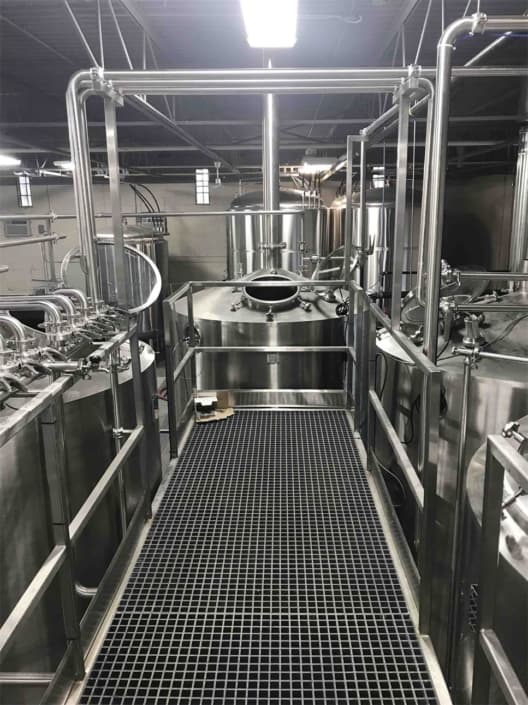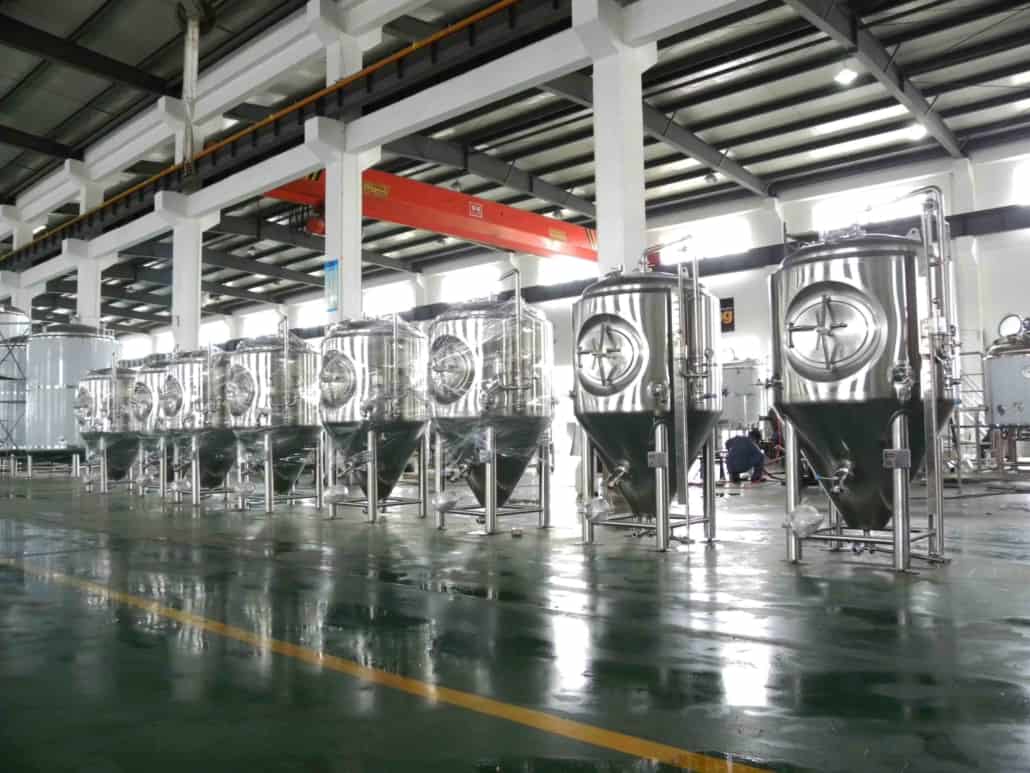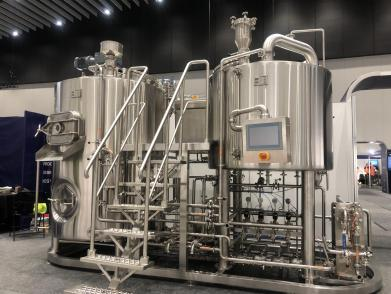Overview of Beer Production Equipment
Commercial beer production requires specialized equipment to brew and ferment beer on a large scale. The main pieces of equipment include:
Brewing Equipment: Mash tuns, lauter tuns, brew kettles, whirlpools
Fermentation Equipment: Fermenters, bright beer tanks
Filtration Equipment: Filters, centrifuges
Packaging Equipment: Bottlers, canners, keg fillers
Ancillary Equipment: Grain handling, cleaning and sanitation, quality control, etc.
The scale and automation of the equipment varies widely, from small manual systems to large computerized brewhouses. When selecting beer production equipment, brewers must consider factors like batch size, production volume, beer styles, quality needs, budget and more.

Main Types of Beer Production Equipment
| Equipment | Description |
|---|---|
| Mash Tun | Mixes grist with hot water to convert starches to fermentable sugars. Often stainless steel or copper. |
| Lauter Tun | Separates sweet wort from grains. |
| Brew Kettle | Boils wort with hops for flavor, bitterness. Usually copper or stainless steel. |
| Whirlpool | Settles out protein trub and hops. |
| Fermenter | Ferments sweet wort into beer. Typically stainless steel or plastic. |
| Bright Beer Tank | Conditions and clarifies beer after fermentation. |
| Filter | Removes particles and extends shelf life. Plate & frame or membrane filters. |
| Bottler | Fills beer into glass bottles, adds crowns. Inline or rotary fillers. |
| Canner | Fills beer into cans, lids cans. Often high-speed rotary fillers. |
| Keg Filler | Fills kegs with beer, may include counterpressure fill heads. |
Beer Production Process
The standard commercial beer production process with main equipment is:
- Milling – Cereal grains are milled into grist to expose starch granules
- Mashing – Grist is mixed with hot water in mash tun to convert starches to fermentable sugars
- Lautering – Sugary wort is separated from grains using a lauter tun
- Boiling – Wort is boiled with hops in the brew kettle for sterilization and flavoring
- Whirlpool – Coagulated proteins and hops are settled out in a whirlpool
- Cooling – Hot wort is rapidly cooled to fermentation temperature
- Fermentation – Yeast ferments sugars into alcohol and CO2 in fermenters
- Maturation – Green beer is conditioned and clarified in bright beer tanks
- Filtration – Particles are removed to stabilize and extend shelf life
- Carbonation & Packaging – Beer is carbonated and packaged into bottles, cans, kegs
The equipment must be designed to maintain sanitation, avoid oxygen pickup, minimize losses, and ensure consistent product quality at all stages. Automation and computer control are often used to track batches, monitor process parameters, ensure quality control and optimize production.
Beer Brewing Equipment Details
Table 2: Equipment Capacity, Design and Customization
| Parameter | Details |
|---|---|
| Batch Size | From 1 bbl microbrewery systems to 5,000 bbl mega breweries |
| Production Volume | From small craft breweries to global brewers brewing over 10 million bbl/year |
| Construction Material | Stainless steel, copper, plastic (HDPE, PET), plycarbonate, fiberglass |
| Automation Level | From manual to semi- to fully-automated |
| Customization | Equipment can be customized for different batch sizes, beer types and quality needs |
| Design | Units available range from standalone tanks, vessels with modular configurations, to turnkey systems |
| Layout | From small compact systems to palletized modular builds to custom engineered plants |
Table 3: Beer Production Equipment Suppliers and Price Ranges
| Supplier | Price Range |
|---|---|
| Major OEMs | $500K to $5 Million+ for full turnkey brewhouses |
| Tank fabricators | $5,000 – $500,000 per vessel |
| Import equipment | Varies, often lower prices from China |
| Used equipment | 20-50% less than new |
Table 4: Equipment Installation, Operation and Maintenance
| Stage | Activities |
|---|---|
| Installation | Delivered equipment is positioned, assembled, utilities connected, wiring, piping, programming done |
| Operation | Trained brewers handle batches, monitor processes, ensure SOPs followed per beer recipes |
| Maintenance | Daily/weekly cleaning and sanitizing procedures done; preventative maintenance as per schedules |
How to Select a Reliable Beer Equipment Supplier
Table 5: Supplier Selection Criteria
| Consideration | Details |
|---|---|
| Reputation and Experience | Years in business; client references and testimonials |
| Quality and Compliance | Construction to food/beverage grade standards; safety certification |
| Offerings Suitability | Equipment meets needs for production scale, batch size, automation level |
| Service Capability | Installation, operator training, maintenance and repair services offered |
| Lead Time and Shipping | Equipment ordering to delivery timelines |
| Pricing and Payment Terms | Competitive pricing with reasonable payment schedules |
| Warranties | Workmanship, parts defects, production output warranties |
Pros and Cons of Types of Beer Brewing Equipment
Table 6: Comparison Between Brewing Equipment
| Equipment | Pros | Cons |
|---|---|---|
| Vertical tanks | Compact footprintEasier cleaning | Height constraints in some facilitiesTemperature stratification issues |
| Horizontal tanks | Even temperature distributionEasier dry hopping/fruit additions | Larger footprintAccess hatches limit internal space |
| Stainless steel | Durable materialEasy to clean/sanitize | High equipment costDifficult fabrication |
| Plastic tanks | Lower equipment costLightweight for shipping | Scratches over timeReduced durability |
| Manual operation | Lower capital costMore hands-on control | Labor intensiveInconsistent process control |
| Automatic control | Consistent beer qualityReduced labor | Additional costComplex programming |

FAQ
What are the most critical equipment in beer making?
The mash tun, brew kettle, and fermenters have the biggest impact on overall beer quality and consistency. The heat transfer systems, filtration, and packaging equipment are also critical.
What is better: Buying new or used equipment?
Used equipment can save substantially on costs, but may carry higher maintenance and have shorter remaining lifespans. Newer gear often incorporates improved hygienic design standards and automation.
How easy is it to expand an existing brewhouse system?
It depends on the original design – modular systems with integrated controls using a master panel make incremental expansions much simpler than hard-piped custom builds.
Is plastic or stainless preferred for fermenters and aging tanks?
Both have advantages – stainless is more durable long-term but requires gentler cleaning regimes. Many brewers use stainless for fermentation and less expensive plastic for dry hopping/fruit aging tanks.
Should I work with a brewery engineering firm or source equipment myself?
Brewery engineering firms provide end-to-end project management, vendor consolidation and often the best pricing on full brewhouse packages. But sourcing tanks yourself allows more customization flexibility.
Additional FAQs on Beer Production Equipment
- How do I size a glycol chiller for a 20 bbl brewhouse with four fermenters?
- Estimate 1–1.25 tons of cooling per 10 bbl of active fermentation plus crash cooling load. For four 20 bbl tanks with staggered cycles, 6–8 tons is typical. Verify with supplier load calcs and ambient conditions.
- What level of automation delivers the best ROI for small craft breweries?
- Semi-automation (PLC with recipe steps, pump/valve interlocks, temp/PID loops, basic cellar controls) often pays back in 12–24 months via reduced labor and fewer process deviations compared to fully manual systems.
- Do I need separate bright beer tanks if I use pressure-rated unitanks?
- Not strictly. Pressure-capable unitanks (1.5–2.0 bar+) can ferment, condition, and carb in one vessel, reducing oxygen pickup and transfers. Many breweries still keep at least one BBT for packaging buffer and flexibility.
- What are the most common hygiene/design specs to request from tank fabricators?
- Internal surface finish Ra ≤ 0.6–0.8 μm, full pickling/passivation, orbital welds ground/polished, CIP spray device coverage test, sanitary tri-clamp connections, PRV and vacuum relief sizing per tank rating.
- How should I plan floor layout for future expansion?
- Leave 30–40% headroom in utilities (glycol drops, electrical, compressed air), install extra process ports, design walkways and forklift paths, and use manifolded CIP/CO2 to add tanks without re-plumbing the plant.
2025 Industry Trends: Beer Production Equipment
- Energy optimization at scale: Multi-zone jackets and improved tank insulation reduce cellar energy 8–15%.
- O2 control focus: Inline DO sensors and low-O2 transfer hardware are now common even in sub-5k bbl/year breweries.
- Can line right-sizing: Growth of compact rotary canners (60–120 cpm) with integrated depalletizers and DO/CO2 monitoring.
- Automation-lite adoption: Cloud logging, simple valve manifolds, and recipe-driven brewhouse PLCs increase repeatability without full DCS cost.
- Sustainability-linked CapEx: Buyers request EPDs for stainless vessels and water/energy KPIs in URS.
- Micro-lager and cold IPA push: Increased use of horizontal tanks or shallow cylindroconicals to speed clarification and improve flavor stability.
2025 Data Snapshot for Beer Production Equipment
| Metric (2025) | Typical Range | Change vs. 2023 | Relevance |
|---|---|---|---|
| Unitank working pressure spec | 1.5–3.0 bar | +0.5 bar | Enables fermentation + carb in one vessel |
| Cellar energy reduction (better insulation/jackets) | 8–15% | n/a | Lowers operating cost |
| Inline DO adoption (sub-10k bbl/yr) | 28–35% | +12–15 pts | Quality and shelf-life gains |
| Compact rotary canner speeds | 60–120 cpm | +20–40 cpm | Higher throughput in small footprint |
| Stainless steel 304L price | $2,600–$3,100/ton | −6–10% | Eases CapEx volatility |
| Typical internal surface finish (Ra) | 0.6–0.8 μm | Tightened spec | Improved cleanability |
Authoritative references:
- Brewers Association Sustainability and Safety: https://www.brewersassociation.org/sustainability
- MBAA Technical Quarterly: https://www.mbaa.com/publications/tq/Pages/default.aspx
- ASME BPE hygienic guidance: https://www.asme.org/codes-standards/find-codes-standards/bpe-bioprocessing-equipment
Latest Research Cases
Case Study 1: Inline DO Control Reduces Dissolved Oxygen During Transfers (2025)
Background: A 7,500 bbl/year brewery reported variable package DO and flavor stability issues on hoppy beers.
Solution: Installed inline DO probes on cellar transfer lines, added low-O2 hoses, purge protocols, and spunding on unitanks; integrated alarms into PLC.
Results: Median package TPO dropped from 70–90 ppb to 25–35 ppb; sensory shelf-life for IPA improved by ~3 weeks at 20°C; fewer dump events.
Case Study 2: Jacket Insulation and Glycol Loop Optimization (2024)
Background: Regional craft brewery faced high glycol compressor runtime and uneven fermentation temps across 30–60 bbl tanks.
Solution: Retrofitted polyurethane cladding on FV/BBT, balanced glycol circuits, added zone valves and better PID tuning.
Results: 11–14% reduction in cellar electricity use; delta-T across tanks narrowed from 1.6°C to 0.7°C; diacetyl rest times shortened on lagers.
Expert Opinions
- Laura Ulrich, Technical Brewing Projects Manager, Brewers Association
- “Investing in oxygen control—from whirlpool to package—delivers the biggest quality win per dollar in 2025, often more than recipe tweaks.”
- John Mallett, Former VP of Operations, Bell’s Brewery; author of Malt: A Practical Guide
- “Hygienic design and verifiable CIP coverage on tanks matter more than tank geometry for day-to-day reliability and stable flavor.”
- Dr. Charlie Bamforth, Distinguished Professor of Malting & Brewing Science
- “Consistency comes from process control. Semi-automated brewhouses with good instrumentation can rival the quality of far larger plants.”
Practical Tools and Resources
- Brewers Association safety and sustainability tools: https://www.brewersassociation.org
- MBAA Best Practices and TQ articles: https://www.mbaa.com
- ASBC Methods of Analysis (beer QA): https://www.asbcnet.org
- G&D Chillers and Pro Refrigeration sizing calculators: https://gdchillers.com and https://prochiller.com
- Anton Paar and Haffmans inline QA instrumentation: https://www.anton-paar.com and https://foodandbeverage.pentair.com
- OSHA pressure vessel and PRV guidance: https://www.osha.gov
- Used equipment marketplaces (for price discovery): https://www.probrewer.com and https://www.equipnet.com
Optimization tip: Use keyword variations like “Beer Production Equipment,” “brewhouse automation,” “unitank vs. BBT,” “compact rotary canning line,” and “low-oxygen transfer system” to match 2025 buyer intent and technical queries.
Last updated: 2025-09-09
Changelog: Added 5 FAQs, 2025 equipment trends with data table and sources, two case studies, expert viewpoints, and a curated tools/resources list aligned with E-E-A-T
Next review date & triggers: 2026-03-01 or earlier if stainless pricing shifts >10%, BA publishes new sustainability benchmarks, or canning/FDA oxygen guidance updates affect packaging specs
Share this entry
Interested in learning more about Brewing Systems including additional details and pricing information? Please use the form below to contact us!
YOLONG BREWERY EQUIPMENT FAQS
- Commercial Brewery / Craft Brewery / Microbrewery / Nanobrewery
- What is The Difference Between Craft Beer and Industrial Beer?
- The Bespoke Differences In Custom Brewing Systems
- Everything You Need to Know About Kettle Souring
- How to Choose Brewing Equipment for Your business?
- How To Choose The-Best Partner To Build Your Commercial Microbrewing System?
- Two Detection Sensors That You Need To Use In Your Brewhouse System
- Remote Control Applications in Brewing Equipment/How does it work?
- How To Clean Your Brand New Brewery Tanks?

